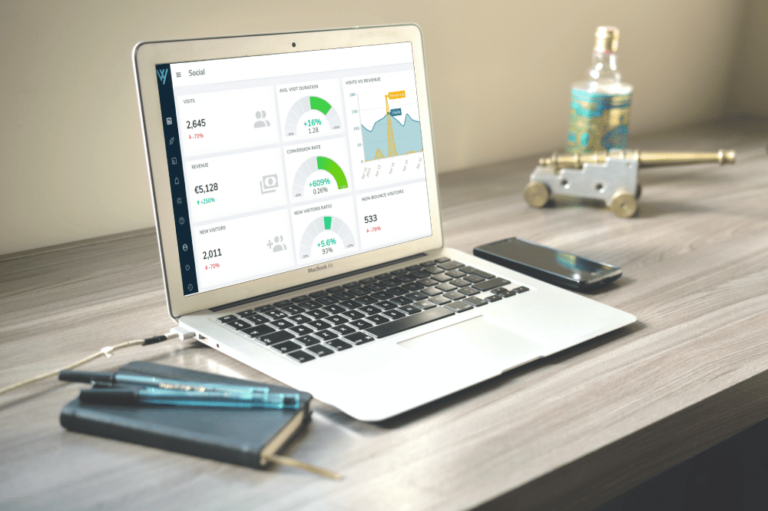Is your marketing strategy future-proof? Are you leveraging trend forecasting to its full potential? Forecasting isn’t just a buzzword—it’s a cornerstone for any savvy marketer aiming to make data-driven decisions. If you’re a director-level marketing professional or higher, this article offers an in-depth exploration into how modern forecasting techniques can refine your market analysis, guide your marketing efforts, and ultimately, impact your market share.
What metrics are you using to predict future trends? How do you validate your data sources? Do you know the benefits of marketing forecasting for your specific industry trends? Keep reading to gain practical insights and actionable recommendations that will take your forecasting game to the next level.
The Fundamentals of Marketing Forecast
Understanding the fundamentals of marketing forecast is akin to laying down the foundation for a skyscraper—it’s that critical. In marketing, a forecast is a data-driven estimate that provides a predictive view of future market conditions, including market size and potential revenue. Forecasts employ both quantitative and qualitative methods to analyze existing data and predict what is likely to happen in the future.
Forecasts are critical because they inform the strategic planning process. For instance, if you’ve identified a growing trend in consumer behavior through customer surveys, this insight can be a key input for your marketing plan. At the same time, a good forecast model can help your sales team allocate resources more effectively.
The importance of accurate forecasts can’t be overstated, especially in B2B and ecommerce sectors where distribution channels can be complex. Forecasting helps to mitigate risks, prepare for unexpected events, and enables the sales team to make better estimates of the number of potential customers.
Several techniques can be employed in the forecasting process, including time-series analysis and qualitative research. These techniques can be employed to identify linear patterns in data and better predict consumer buying habits.
Lastly, remember that forecasting is not a one-time task. It’s a continuous activity that requires regular updates and refinements, especially when considering short-term forecasts for the next six months or so.
Advanced Trend Forecasting Techniques

If you’re already familiar with forecasting basics, perhaps you’re seeking to sharpen your skill set with advanced forecasting techniques. These can offer a deep-dive analysis into trends and forecasts, allowing you to better predict future market conditions. Trend forecasting is the process by which you can use data points and trend data to anticipate shifts in consumer behavior and market conditions.
Several techniques can be employed to deepen your understanding of trends, such as time series analysis. This method leverages historical data and past data to provide a quantitative assessment of future trends. This is particularly useful when you have a rich database of market data and sales data.
In addition, qualitative methods can provide insights that are not easily captured by numbers. For example, if you wanted to know whether existing customers are likely to switch to a new product or service, qualitative data can provide the answers needed to know this information. Qualitative research can include customer interviews, focus groups, and open-ended customer surveys.
Furthermore, analytics tools are essential in advanced trend forecasting. These forecasting tools can automate data collection from various data sources, including customer data and consumer data, making the forecasting process more streamlined and efficient.
Another key aspect of advanced trend forecasting is validation. Always validate your forecasts using a case study or past performance indicators. Validation can help identify any biases or assumptions that might have skewed the forecast, making it more reliable and accurate.
Lastly, integrating qualitative and quantitative methods can provide a more holistic view of the market. For example, while quantitative data can give you hard numbers, qualitative data can provide context and deeper insights into consumer buying habits.
Benefits of Marketing Forecasting for Market Share

If you’re aiming to dominate your market share, understanding the benefits of marketing forecasting is crucial. This approach allows businesses to allocate resources more efficiently, targeting potential customers with more precision. By understanding your customers’ purchasing habits, you’re better positioned to capture a larger market share.
Marketing forecasting provides product development insights, allowing you to tweak or introduce new products based on forecasted consumer needs. This makes your product or service more competitive and appealing, helping you increase your market share.
Furthermore, knowing future trends can help you adjust your marketing campaigns and strategies. Accurate forecasts allow businesses to make informed decisions, whether it’s a matter of scaling up operations or venturing into a new market.
Marketing forecasting also helps you understand your market size and potential revenue. It allows you to better estimate your company’s financial prospects, thus aiding in strategic planning and investment decisions.
Finally, marketing forecasting enables you to be more proactive rather than reactive to market changes. Being ahead of the curve positions you for better market share acquisition and sustains long-term business growth.
How to Validate Your Forecasting Data

Data validation is a critical component of any forecasting venture. Whether you’re using market research, quantitative methods, or a mix of both, ensuring that your data is reliable is key. One approach is to use existing data from trusted industry reports and studies. This provides a baseline for your predictions based on verified data.
Another way to validate is by doing a back-test on past forecasts. Compare your forecasts with actual outcomes to gauge the reliability of your forecasting methods. Were your sales forecasts accurate? Did the trends you identified indeed influence the market?
Customer surveys are also a valuable validation tool. Direct feedback from your target market can serve as a litmus test for your forecasts. Their responses can help fine-tune your models, providing insights into consumer needs and preferences that may not be readily available through quantitative data alone.
External factors like economic trends also need to be considered during validation. For example, if you’re forecasting for an online store, understanding the broader ecommerce trends can offer an additional layer of validation.
Finally, using several techniques and data sources for validation can enhance the credibility of your forecasts. Whether it’s through quantitative and qualitative research, industry reports, or case studies, multiple validation points make your forecasts more robust and reliable.
Wrapping Up: The Power of Forecasting
Mastering the intricacies of marketing forecasting isn’t just a ‘nice-to-have’—it’s essential for any modern marketer eyeing significant market share and impactful marketing efforts. Remember, forecasting isn’t a static activity; it’s an ongoing process that involves both quantitative and qualitative methods. Validation of your forecasts is crucial, and using reliable data sources adds robustness to your predictions. Advanced trend forecasting techniques can take your analytics to the next level, allowing you to better understand consumer behavior and future market trends.
The benefits of marketing forecasting are manifold—from smarter resource allocation to enhanced strategic planning. When done correctly, it serves as a linchpin in your marketing strategy, enabling you to anticipate market needs, target potential customers more effectively, and adapt to changing conditions swiftly.
If all of this seems daunting or if you’re looking for an edge in implementing top-notch forecasting into your marketing strategy, Wizaly is here to help. With our specialized customer journey attribution platform, we can provide the actionable insights and advanced analytics you need to make your forecasts not only accurate but also highly profitable.
Ready to elevate your forecasting game? Contact Wizaly today to unleash the full potential of your marketing forecasts.



